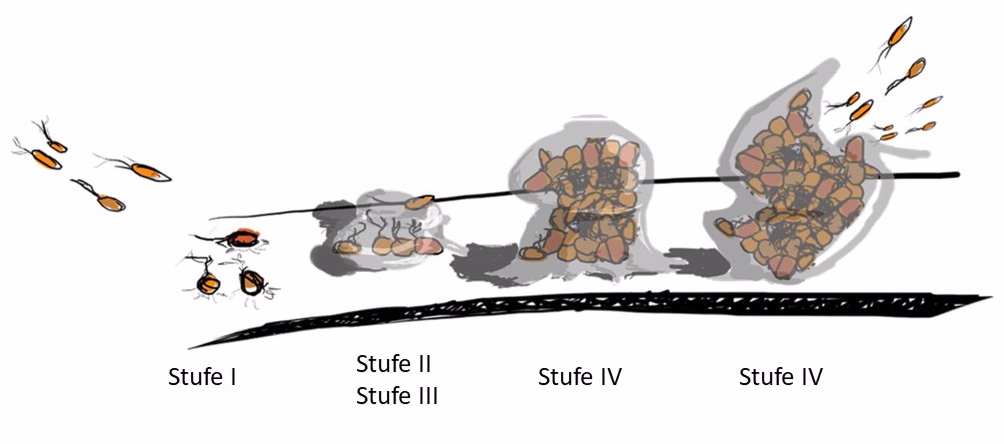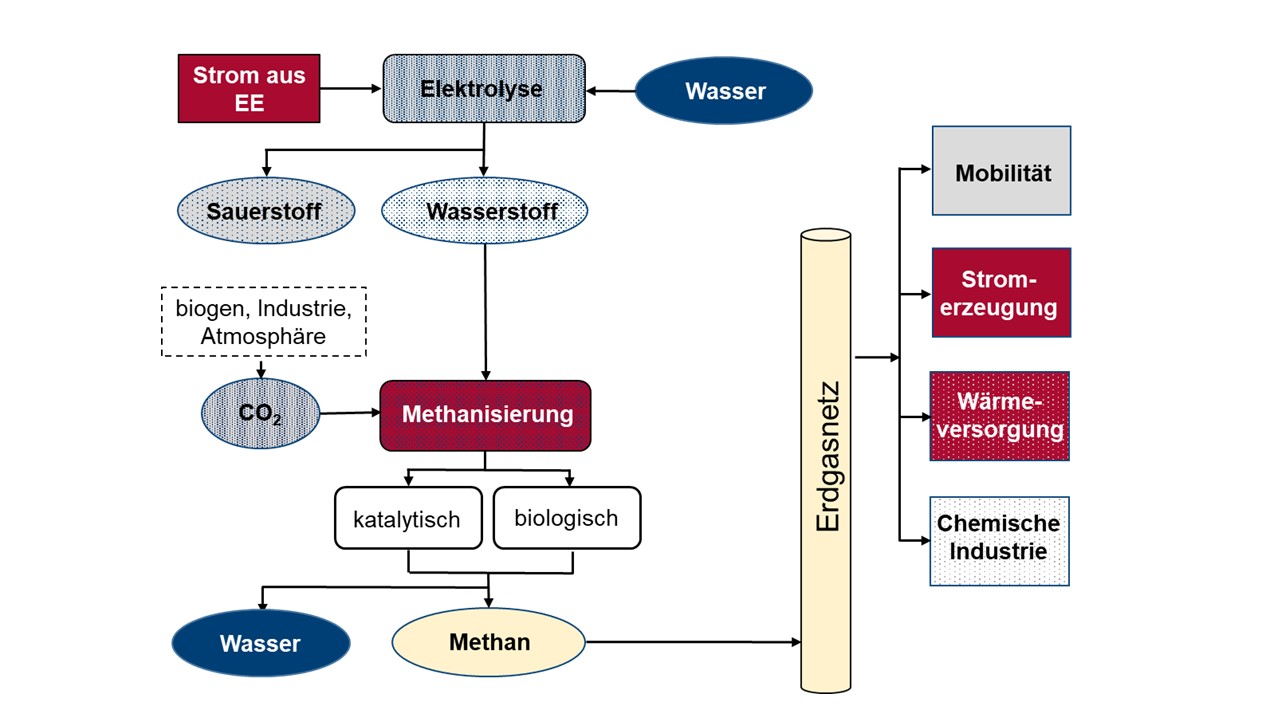Main navigation
New technologies for using biogas as a balancing energy
The microorganisms in biogas plants do a great job biologically converting CO₂ and hydrogen, which are primary fermentation products, into methane. Biomethane has a great future as an energy source. Scientists at the University of Hohenheim are investigating new ways to produce and use biomethane.
Methane (CH4) is the main product of around 9,400 biogas plants in Germany. Depending on the method used, biogas consists of between 50 and 65 percent methane. The rest is carbon dioxide (CO2) and small quantities of hydrogen (H2) and hydrogen sulphide (H2S). The exciting thing about methane is its versatile utilisation potential, and its strength lies in the complex energy supply structures of the future. Methane can be used directly in cogeneration plants that are coupled with biogas plants to generate electricity and heat. But it can also serve as fuel, and be fed into the existing excellent natural gas network. PD Dr. Andreas Lemmer from the University of Hohenheim has been working on biogas development for many years and knows why it is so promising: “Methane offers the excellent opportunity to stabilise power grids in the long term. This can be achieved by uncoupling biogas production both spatially and temporarily from its use. The natural gas network is not only a transport network, but also a gigantic storage network that can store all of Germany’s natural gas requirements for three months. No other energy storage system is as powerful. We can use this storage function to generate electricity from methane when it is needed.”
This makes biogas a renewable controllable energy that can balance other renewable energy sources such as wind and photovoltaics when they cannot deliver much due to the weather. Due to the low proportion of renewable energies in Germany’s energy mix, this has not been a problem so far. However, as we work on making the transition from fossil fuel-based energies to renewable energies, the national proportion of renewable energies will increase to 80 percent by 2050. “In future, pump storage power plants alone will not be able to cover the need for balancing energy. However, biogas plants have the potential to supply around 90 percent of the controllable energy requirements,” says Lemmer. He works with his team and cooperation partners on the development of efficient and economical technologies for producing biogas.
Linking renewable energies sensibly

Lemmer's team is pursuing a slightly different strategy with the high-pressure fermenter. The researchers use trickle-bed reactors in which bacteria form a biofilm on the carrier material. This increases the contact area between the bacteria and the CO2 and hydrogen gas mixture. Once a day, the biofilm is sprinkled with a nutrient solution for about two minutes but is otherwise only surrounded by gas. Hydrogen and CO2 are fed into the fermenter from below and compressed to 10 bar. This increases the residence time of the hydrogen, which would otherwise have flowed through the fermenter within a few seconds. “We get an extremely stable system with a high space-time methane yield. There are no resource requirements and the bacterial population is so stable that we can sometimes halt the application of gas for a few days. Even a sudden drop in pressure does not kill the bacteria, nor does a rapid increase in pressure,” says Lemmer. The microorganisms are also capable of working in a wide temperature range from 37 to 65 degrees Celsius. The highest space-time yields are achieved at operating temperatures of 55 to 60 degrees Celsius. The product, i.e. methane, is continuously discharged at the top. At the moment, the team is still working with 20-litre laboratory-scale fermenters. Later, on the pilot scale, three to four metre-high, 500-litre fermenters will be used. “Mature fermenters will be 100 to 500 times larger than the laboratory-scale ones. Several fermenters can be operated in parallel in a row,” says Lemmer.
Simple and robust are good prerequisites for application
Project partners at KIT in Karlsruhe are researching how economical the process will actually be. “They simulate the entire process on the computer and break down the energy and material flows down to the last detail. Our industrial partners implement the process technically and price the components,” says Lemmer. In late 2019, the project partners found that the operating costs of biogas production can be reduced by 20 to 30 percent compared to the conventional production and processing of biogas into natural gas quality. According to Lemmer, this is mainly due to the fact that the desired quality of gas can be achieved directly in the reactor, which significantly reduces the technical steps required. “Basically, with the high-pressure fermenter we are able to combine three separate steps into one. At present, biogas is generated, cleaned and subsequently fed into the network under pressure.”

The low technical effort is only one side of the coin. The legal framework also needs to be right if this type of biogas production is to make economic sense. If the hydrogen used for methane production is generated electrolytically from water using electricity, the electrolyser is considered a consumer. This means that the plant operator currently has to pay an EEG (Renewable Energy Sources Act) surcharge. “As long as this remains the case, the process cannot be used economically. So the exciting question is how the legal framework will develop. However, since no 'greening' can be achieved in the natural gas network without 'power to gas' technologies, I'm cautiously optimistic. In addition, RED II, i.e. the new version of the Renewable Energy Directive at EU level, will make the use of biomethane as a fuel significantly more interesting and create new possibilities for application,” says Lemmer. The Hohenheim biogas plant is expected to be up and running by late 2020/early 2021 and RED II is expected to become part of German law in 2021 – so the timing would be perfect.